- Home
- Neal Stephenson
Atmosphæra Incognita Page 2
Atmosphæra Incognita Read online
Page 2
The next step was to construct the foundation strips: six reinforced-concrete tracks, each straddling one of the spoke lines. This part of the presentation went pretty fast; there wasn’t much interesting you could say about pavement.
The concept of a rolling factory was harder to explain. Factories they got, but no one had ever seen one crossed with a main battle tank the size of a shopping mall. This was where the computer-graphics renderings really came in handy, showing how the thing was built from the ground up on huge steel treads, how it accepted its inputs (steel! steel! and more steel!) from the railway line that ran right through the middle of it, assembled them into trusses, connected them to the bottom of the Primary, and then pushed them straight up through a hole in the roof. It was all reasonably easy to follow, once you got the gist of it. The one part that was a little hard to convey was that each of these six rolling factories—one for each Primary—was also a structural foundation supporting its share of the tower’s whole weight. The factory didn’t just have to roll (slowly!) along the runway. It didn’t just have to assemble trusses and feed them out its ceiling. It also had to contain hydraulic rams for pushing the tower up, transmitting its share of the weight down through its structure into the big steel tank treads and from there into the foundation strip and finally into Carl’s precious bedrock.
Having gotten those preliminaries out of the way, I was able to proceed to the big all-singing all-dancing animation (complete with moving symphonic music) showing the six Struders (as we had come to call the truss-extruding factories) poised at their starting positions at the innermost extremes of the spokes, nearly touching one another. Six trains came chugging up the lollipop handle and went their separate ways around the rim line. A seventh went straight into the center, headed for a central, non-moving Struder designed to extrude the tower’s core. Once each of the seven had been supplied by its own train, steel trusses—kinda like radio towers—began to emerge from the holes in their roofs, growing upward like stalks from magic beans. There was a pause as cranes went to work framing in a platform that joined the six Primaries with the core. This was my opportunity to wax poetic as I marveled over the fact that this platform would one day be twenty thousand meters above the ground, for all practical purposes in outer space, where the sky was black and the curvature of the earth visible. Honeymooners would luxuriate in pressurized suites, astronomers would gaze at the universe through glass eyes undimmed by atmospheric pollution. Rockets would launch from it and extreme skydivers would jump off.
And yet 99 percent of the workers who built it would never have to leave the ground.
The reaction to that was mixed. Oh, everyone understood why it made sense—you couldn’t have a large workforce commuting straight up into the sky every day, breathing from oxygen tanks and swaddled up in space suits. But it did take some of the romance out of it. At some level I think that every blue-collar worker who ever attended one of these presentations was telling himself that he would be one of the tiny minority of employees who would actually get to go up high on the tower, inspecting and troubleshooting.
The rest of the movie was predictable enough. The trains kept rolling in, the Struders kept extruding, pausing from time to time so that the freshly extruded Primaries and core could be webbed together with stiffening trusses—Kavanaugh’s “core muscles.” We speeded up the movie, of course, once people got the gist of it. Push, pause, web. Push, pause, web. With each push the factories rolled outward imperceptibly on their tracks, moving about one meter for every fifteen meters of stuff they extruded, keeping the tower’s height-to-width ratio fixed. Though, toward the end, they started moving a bit faster, making the base splay out, giving it a bit of an Eiffel Tower feel. Even the people who walked into the room claiming to be worried that it would fall over were convinced by this; it had a wide enough stance that it just looked stable. Up and up went the steel as I recited lore that I had picked up from Wikipedia and from meteorology textbooks and long conversations with Ph.D. metallurgists about the different layers of the atmosphere and the varying challenges that the tower would have to contend with: down below, rain and rust. Up higher, icing. Higher yet, wind loading, the possibility of contact with a wandering jet stream (or a wayward jet). Profound cold that would render the metal brittle if we had been dumb enough to use the wrong alloys. Thermal expansion and contraction as the unfiltered sun shone on its higher reaches in the day and then disappeared at night. Each challenge was an opportunity to generate energy with photovoltaics (up high) or convection ducts (down low) or wind turbines (in the middle).
So much for the pitch.
And so much (almost) for my marriage, which barely survived all of the absences, all of those nights in chain hotels far from home, all of those alarming changes in wardrobe and hairstyle.
IF I WERE TO write a book about building the tower, I’d here interpolate a three-year-long chapter entitled “Politics and Lawyers.” Halfway through it, I got a text message from Carl:
CALI = LOSER
meaning, “Sell the property in California.”
My response was
OK
but my reaction was a little more complicated. I had known all along, of course, that we’d end up selling at least three of the four properties. But I’d spent time in each of those places and had made friends with the locals, and I didn’t look forward to breaking them the news that their bid—for by this point, each of these things had mushroomed into a complicated bid package binding together state and local governments, unions, banks, and other worthies—had been rejected.
The answer, simply, was that the tower was going to be visible from the hills above Oakland and Berkeley: a spendy part of the world where lots of rich people were accustomed to looking out the windows of their nice houses and seeing the landscape. And only the landscape. They didn’t want their views marred by a twenty-kilometer-high “monstrosity” whose “stark, ugly, industrial profile” was going to be “cluttered” with “ungainly industrial encrustations” and “gaudy” with a “Las Vegas-style light show” that would “sully the purity of the skies night and day.”
Southwestern Texas got killed six months later by environmentalists being used as sock puppets by an unholy alliance of—well, never mind. Demonstrating in court that their claims were bogus would have been expensive. Bankrolled as well as they were, they could have stretched the process out forever by filing legal challenges. Arizona was the next domino to fall. It had always been a long shot, but we’d held on to it mostly to give us greater bargaining power over the Nevada site, where local politicians had smelled money and begun to let us know, in various ways, that we were going to have to play ball.
So that was how I came to earn four commissions by purchasing four “losers” for Carl, and another four by selling each and every one of them. We made money on two, lost money on another two, and pretty much broke even on the whole deal.
That was how the project ended up where it did: between an Indian reservation and a decommissioned military bombing range, out in the southwestern desert, in an area that had already demonstrated its openness to radical transformations of the landscape, first by bombing the crap out of it, then by building a casino complex, and most recently by its wholehearted acceptance of wind farms.
At about the same time we closed a deal on an aging complex near the Illinois-Indiana border and got to work building a new kind of steel mill. The Great Lakes were still the best place in the world to make steel. This was a far cry from our original scheme to have the mill on-site. But in the intervening years it had become clear that lots of people wanted the kind of steel that a new mill could produce. Hard as it was to believe, the tower had become a minor customer.
Transportation wasn’t that big of a deal. Smaller pieces could be shipped southwest on freight trains. Big stuff was barged down the river system to the Gulf, dragged through the Panama Canal, landed at the head of the Gulf of California, and then transported overland using land trains.
<
br /> The site was twenty minutes’ drive from a college town, which gave the employees a place to educate their kids and entertain themselves and gave us a ready supply of fresh young engineering talent.
As well as a cowgirl-themed gay bar. Which became pretty important when Carl told me—as if this should have been obvious from the beginning—that I was moving there to run the whole thing.
“I’m not qualified to construct a twenty-kilometer-high tower,” I pointed out.
“Since it has never been done before,” he said, “no one is.”
“The engineering is totally beyond my—”
“We have engineers.”
“All the legal ins and outs—”
“Lawyers.”
I was dreading the conversation with Tess but she’d seen it coming long ago. Hell, maybe Carl had even prepped her.
“Let’s go,” was all she said.
Bless her beautiful heart, I thought. But what I said was “Huh?”
“I’ve been looking into it. Precleared it with my boss. I’ll telecommute.”
NEITHER OF US REALLY believed that, of course. Her job lasted for all of twelve weeks after we moved.
She cashed in some stock options and bought the cowgirl bar for less than what she had spent on her last car. With what was left over she bought a pickup truck from a rancher who had sold his land to Carl.
Five years later, the bar had morphed into the hangout for all the engineers, gay and otherwise, who had moved to the area.
Another five years after that, Tess was operating the First Bar in Space.
Oh, people argued about it. Space tourism had been gathering steam. Queasy/giddy tourists drifted around the tiny envelopes of their suborbital capsules and sucked premixed cocktails from nippled sacs and this got billed as the first bar in space. It became like the debate on who had built the first computer: well, depends on what you consider a computer.
What do you consider a bar? For Tess it had to have a jukebox, a dartboard, and gravity. You can’t get a head on your Guinness in zero gee.
At first it was just a shipping container with portholes plasma-torched by Tess’s eternally grateful clientele of elite ultra-high-altitude steelworkers. This was back in the early days when the Square Kilometer—as we called the (actually round) platform at the top of the tower—was still only a couple of thousand meters off the ground. Once we broke through four thousand meters it became necessary to start running oxygen concentrators full-time, even for the altitude-adjusted regulars. On the day the Top Click (as we called the Square Kilometer by that point) pushed up past the altitude of Mt. Everest, we moved the whole operation into a pressurized Quonset hut and filled it with sea-level atmosphere. Beyond ten thousand meters we just started calling it the First Bar in Space. There was carping on the Internet but the journalists and businesspeople who rode the helirail up to the top and sat at the bar taking in the black sky and the curvature of the earth—well, none of them doubted.
I’m leaving a lot out: five years of starting the project, ten years of riding it up. Tess and I had two kids, raised them to teenagerhood, and went through a spell of personal-life hell when she had an affair with a Mohawk ironworker who drifted in from Upstate New York and stormed out a year later when Tess thought better of it. I ran the show for a few years until Carl suddenly announced during a meeting that (a) I had done a fantastic job but (b) I was being replaced effective immediately and (c) he was commencing radiation therapy for prostate cancer forty-five minutes from now. He then gave me the world’s most unusual commercial real estate gig: selling off the Top Click. Obvious conflict-of-interest issues were raised by my wife’s bar; Carl resolved them by giving us a lease in perpetuity, hand-scrawled on the back of a boarding pass.
Shipping materials to the top of the tower only became more expensive as it went up, so we had framed in the big structures while the Top Click had been on the ground, then stockpiled steel and other goods that could be used to finish it later. All of it got a free—but very slow—ride to twenty thousand meters. Additional structural work proceeded at a leisurely pace during the years that the Top Click was rising up through the Dead Zone—the altitudes from about seven to twelve kilometers. Below seven, humans could breathe (though most needed oxygen bottles), move around without pressure suits, and enjoy a decent enough view. It was cold as hell, but you could wear warm clothes; it was like being at a base camp on a man-made Himalaya. Much above seven, there wasn’t enough atmosphere to breathe, but there was enough to supply foul weather in abundance. The view down was often blocked by clouds, the view up not yet enlivened by starlight. Past Everest height—nine kilometers or so—we got up into screaming sub-sub-subzero winds that, at their worse, were close to jet stream intensity. There wasn’t much point in trying to keep glass in window frames. Even heavy-looking stuff like shipping containers had to be welded down or it would blow off, fall a few miles, and break something on the ground. There were ways to deal with it; but it basically led to Top Click operations being put in suspended animation until the Struders on the ground pushed it up out the top of the Dead Zone. During that time, we had other things to think about: sheathing the horizontal braces in giant wings, and getting them to work right.
Above the Dead Zone, things got nice in a hurry. The buildings, which had been empty shells for several years, got shelled in by space-suited workers and then pressurized with proper atmosphere so that shirtsleeved workers could get in, lay carpet, and put on doorknobs.
It was during that phase, when the Top Click was about seventeen kilometers above the ground, that we threw a party in the First Bar in Space for the purpose of scattering Carl’s ashes. The basic idea being that they would fall for a couple of kilometers, get snatched by the wind, and disperse.
I was the last to arrive, carrying the guest of honor—a Ziploc bag full of Carl—in a messenger bag that looked way too hip for a middle-aged mom in the real estate business. My flight from SFO had been delayed by one monster of a storm front: the kind of thing that had been sweeping west to east across the Great Plains since time immemorial but was rarely seen in our part of the Southwest. But like the proverbial frog in a pan of water, we’d all been getting accustomed to shifts in the climate, and weather events unheard of during the previous century. The airline had found a way to route me around the storm, but as I drove in from the regional airport in Tess’s pickup truck, I could see clearly enough that it was determined to catch up with me: an arc of stratocumulus anvil clouds stretching, it seemed, from Baja to Utah, blotting out the late-afternoon sun and flashing here and there with buried lightning.
It was the only thing that could make the tower look small.
One of the engineers, way back at the beginning, had described it as “a gas of metal,” which was pretty poetic for an engineer but did convey its gist: the minimum of steel needed to do the job, distributed over the largest volume it could feasibly occupy, but in a specific way meant to solve a host of structural problems. At night, when the lights came on, it looked far more substantial than during the day, when it was a glinting cloud that rose up out of the desert like an inverted tornado. If you let your gaze be drawn up high enough—astonishingly high, far above most clouds—you could see its ladder of wings cruising in the jet stream, like a set of Venetian blinds hanging inexplicably in space. Above that, frequently obscured by haze and clouds, was the flare at the very top where it broadened to support the Top Click.
Even though I’d been living with—and on—this thing for going on twenty years, I was still impressed with its scale when I approached it as I was doing now. But having Carl’s earthly remains on the passenger seat somehow drew my attention to his ground-level legacy, which now spread out from the base of the tower to a radius of ten or twenty miles. Fanning away to the east-southeast was an expanse of open rangeland, inhabited only by bison, groundhogs, and a few back-to-the-land types: vaqueros and the Indians who had always lived in those parts. Part of it was a bombing range. The re
st I had acquired, one ranch at a time, using shell companies so that the landowners wouldn’t gang up on me. Because one of the questions people had asked was “What if it gets rusty and falls over?” and Carl’s answer had been “Then we’ll use demolition charges to fell it like a tree down the middle of the Swath,” as this territory had come to be known. Which to me had seemed like bending over backward for the NIMBY types, until I’d understood that Carl had always intended to use the tower as a catapult for launching space vehicles, whose trajectories, for the first twenty miles, would pass right down the middle of the Swath, which he therefore needed to keep clear anyway so that failed rockets would have a place to crash.
The new highway from the airport ran along the Swath’s northern border for the last few miles, and as I drove in I enjoyed, to the left, a vista of grazing bison and the occasional horse-riding Indian, and to the right, a generic exurban sprawl of strip malls and big-box stores that had sprung up to fill the needs of all the people who had moved here. Behind that line of development I could hear the long blasts of a locomotive whistle: another huge train rolling in from Chicago carrying prefab steel trusses to feed into the Struders.
The ring line encircling the base was discernible as a crescent of five- to ten-story commercial buildings adorned with the logos of the tech firms and contractors that had set up shop here. Mixed in were hotels and apartment buildings housing temporary residents as well as the younger, more urban crowd who wanted to be close to what had developed into a passable nightlife and entertainment district. From their windows they could look out over residential developments spreading away along the state highway connecting to the college town. All of this had a temporary feel, since it was understood that when the tower topped out and the Struders ground to a halt, the bottom kilometer would develop into a vertical city, a much cooler place to live—climatically as well as culturally.

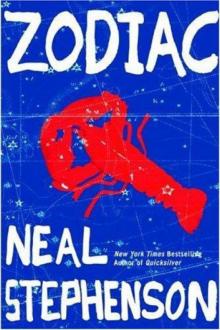 Zodiac: The Eco-Thriller
Zodiac: The Eco-Thriller The Mongoliad: Book One
The Mongoliad: Book One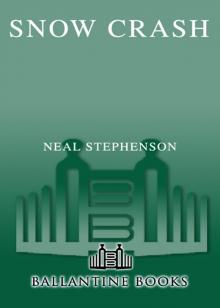 Snow Crash
Snow Crash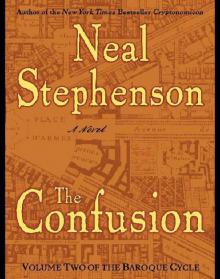 The Confusion: Volume Two of the Baroque Cycle
The Confusion: Volume Two of the Baroque Cycle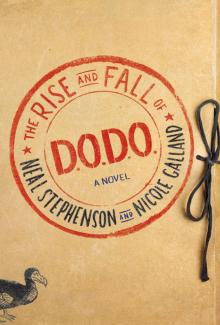 The Rise and Fall of D.O.D.O.
The Rise and Fall of D.O.D.O. The Diamond Age: Or, a Young Lady's Illustrated Primer
The Diamond Age: Or, a Young Lady's Illustrated Primer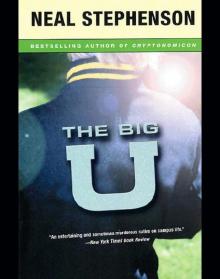 The Big U
The Big U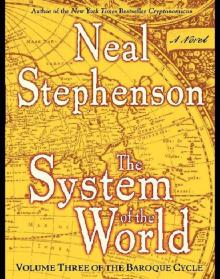 The System of the World: Volume Three of the Baroque Cycle
The System of the World: Volume Three of the Baroque Cycle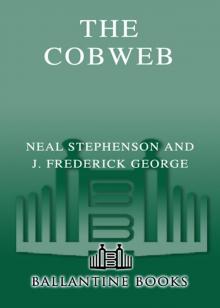 The Cobweb
The Cobweb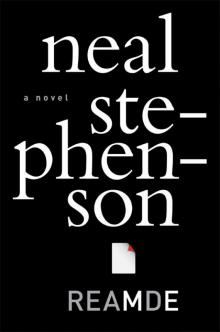 Reamde
Reamde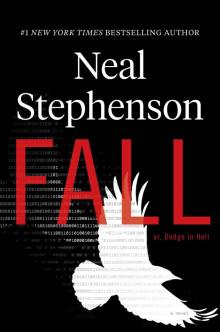 Fall; or, Dodge in Hell
Fall; or, Dodge in Hell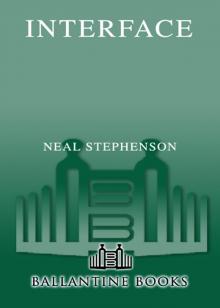 Interface
Interface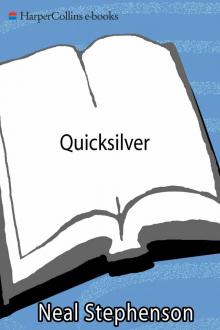 Quicksilver
Quicksilver The Mongoliad: Book Three
The Mongoliad: Book Three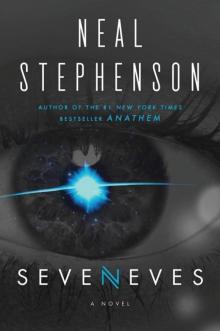 Seveneves
Seveneves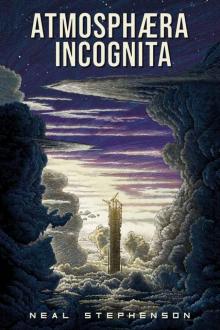 Atmosphæra Incognita
Atmosphæra Incognita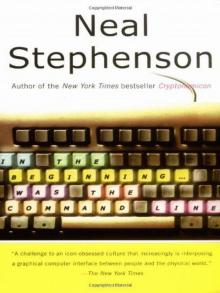 In the Beginning...Was the Command Line
In the Beginning...Was the Command Line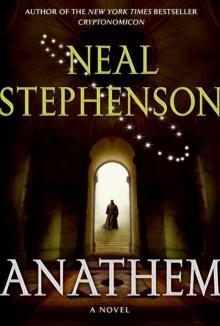 Anathem
Anathem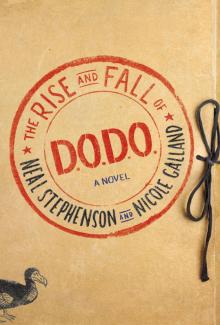 The Rise and Fall of D.O.D.O.: A Novel
The Rise and Fall of D.O.D.O.: A Novel The Mongoliad: Book Two
The Mongoliad: Book Two Diamond Age or a Young Lady's Illustrated Primer
Diamond Age or a Young Lady's Illustrated Primer THE System OF THE WORLD
THE System OF THE WORLD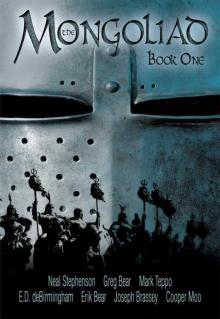 The Mongoliad: Book One tfs-1
The Mongoliad: Book One tfs-1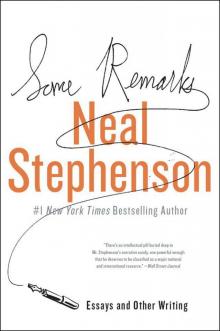 Some Remarks: Essays and Other Writing
Some Remarks: Essays and Other Writing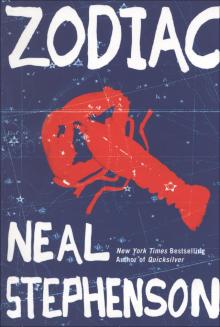 Zodiac
Zodiac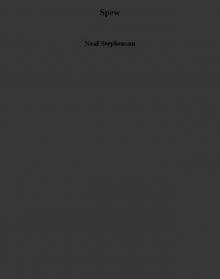 Spew
Spew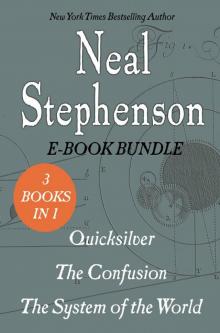 The Baroque Cycle: Quicksilver, the Confusion, and the System of the World
The Baroque Cycle: Quicksilver, the Confusion, and the System of the World The Diamond Age
The Diamond Age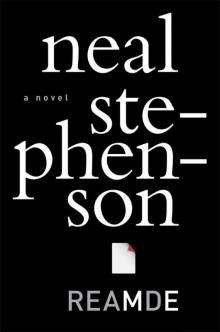 Reamde: A Novel
Reamde: A Novel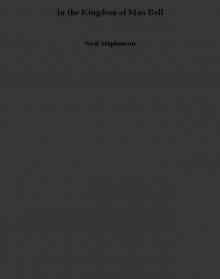 In the Kingdom of Mao Bell
In the Kingdom of Mao Bell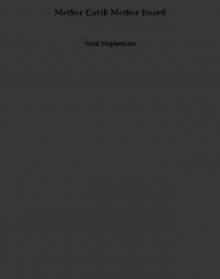 Mother Earth Mother Board
Mother Earth Mother Board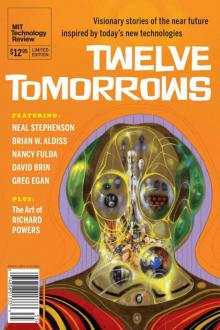 Twelve Tomorrows - Visionary stories of the near future inspired by today's technologies
Twelve Tomorrows - Visionary stories of the near future inspired by today's technologies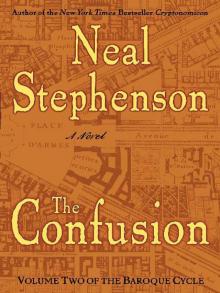 The Confusion
The Confusion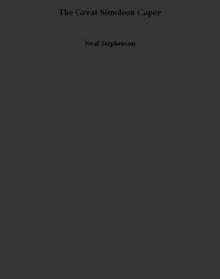 The Great Simoleon Caper
The Great Simoleon Caper The Mongoliad: Book Three tfs-3
The Mongoliad: Book Three tfs-3